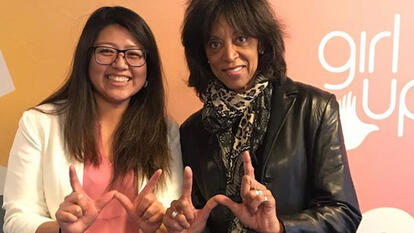WBUR, the Atlantic, and NBC Ask Professor Rosanna Hertz about Donor-Sibling Networks

Parents of sperm-donor conceived children, and the children themselves, have turned to social media, the internet, sperm bank registries, and at-home DNA tests kits to locate and connect with genetic siblings as well as the donors.
Rosanna Hertz, Class of 1919 50th Reunion Professor of Sociology and Women’s and Gender Studies at Wellesley, wrote a book with Margaret K. Nelson on the topic: Random Families: Genetic Strangers, Sperm Donor Siblings, and the Creation of New Kin. Their research is based on over 350 interviews with children and parents who are members of donor-sibling networks across the United States. Hertz will present her research at the American Association for the Advancement of Science’s annual meeting in Washington, D.C., next month.
Hertz recently shared her insights about the current status of the trend with several media outlets. On WBUR’s On Point, she told host Jane Clayson, “At a time in which the American family is thinning in terms of its membership and the branches of the family tree, this is an important way in which people can create a new kind of kin relationship based on genes or biology.”
A large part of the appeal of these meetings, said Hertz, is curiosity. “People are curious…and we have no examples of people who didn’t like each other,” she said.
For an article in the Atlantic, whose author appeared with Hertz on WBUR, Hertz commented on the degree to which some parents are motivated as “social capitalists” to connect their children to a network of familiar genetic siblings that could lead to social connections, advantages, and opportunities, like a cross between an extended family and alumni network.
Hertz also spoke about her research with NBCNews.com, commenting on the complications that sometimes arise when donors meet their children. For example, some donors have not informed their spouses that they used to donate sperm. And relationship-building for the children can also be complicated. “The donors usually play it by what the kids want,” Hertz told NBC.
In the On Point interview, Hertz referred to one group as “tourists” who “just want to know who the others are who share their DNA” but are not necessarily interested in forming lasting ties.
She said the siblings are largely interested in meeting each other to discern similarities in personality traits and physical characteristics. They also want to access information they might need in the case of medical emergencies.
In some instances, donor siblings are fascinated when they meet other people who were raised in different settings and different families yet have similarities.
The initial meeting between donor siblings “can be a startling realization and surprise to suddenly meet kids who are often very close in age to you who are very much like you,” said Hertz to On Point.
Photo: Rosanna Hertz (center) working with students Lily Mohr ’19 (left) and Jamilah Lewis-Horton ’19.



